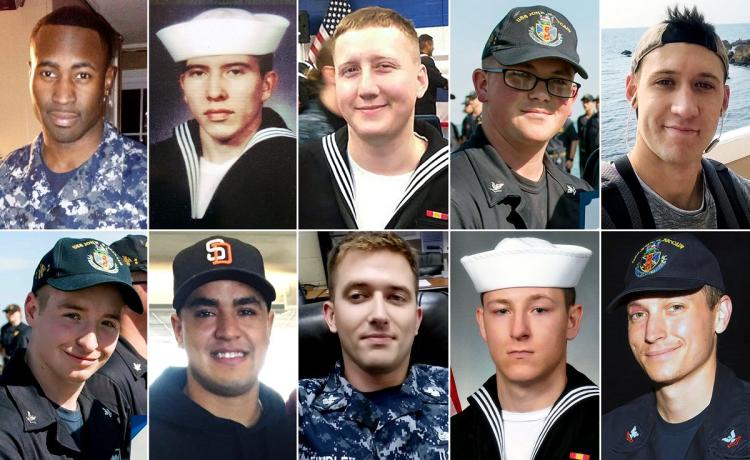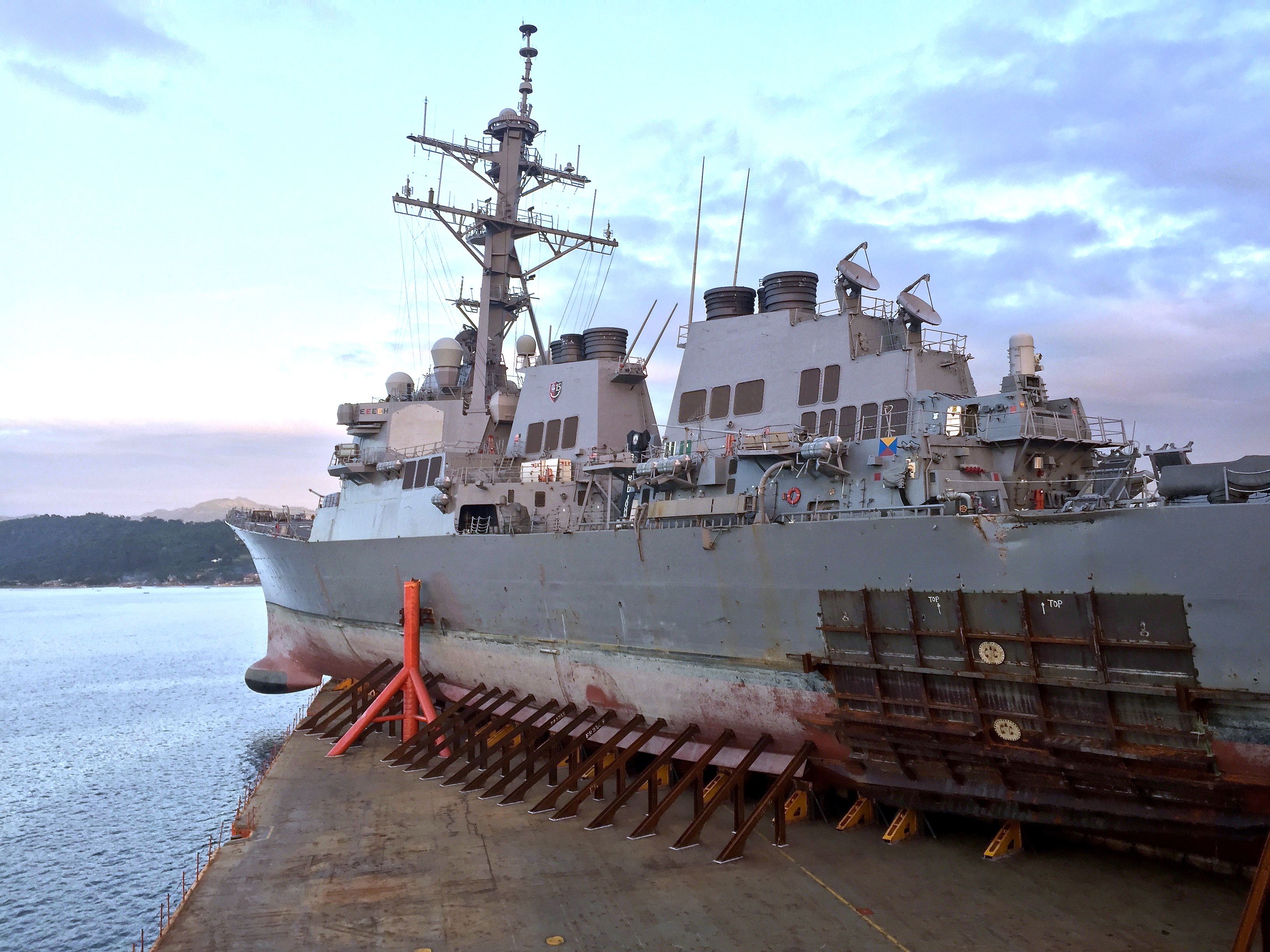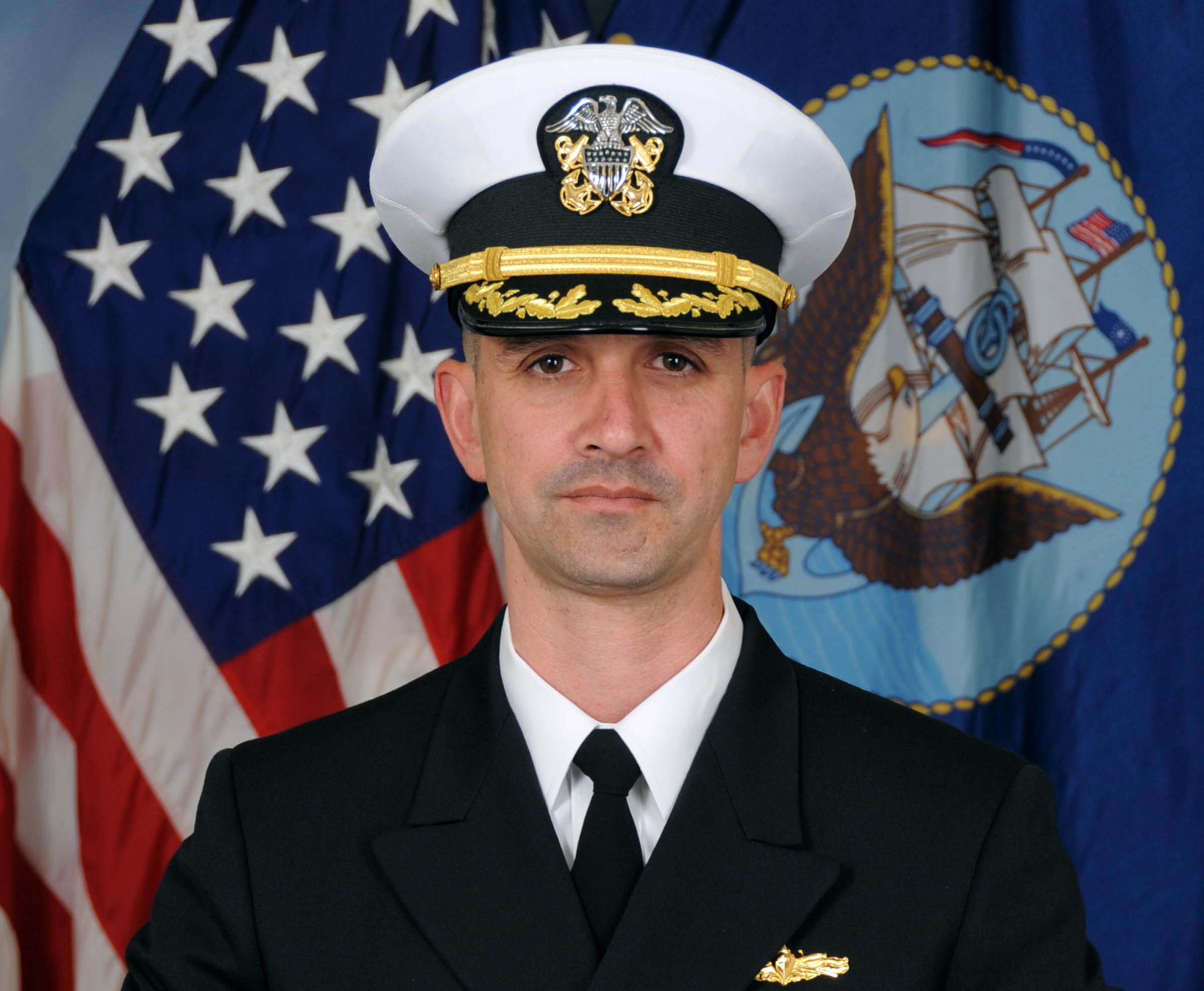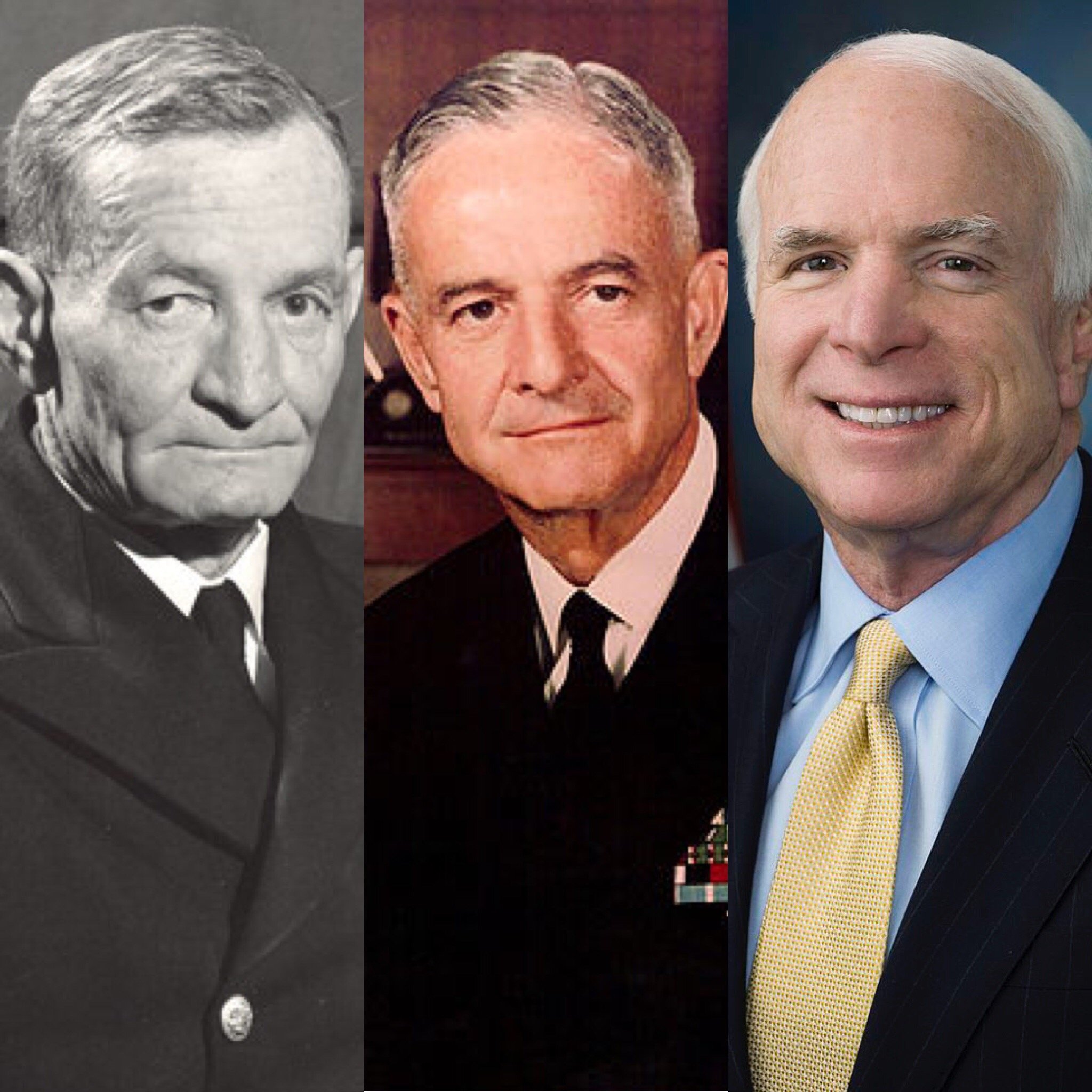
(bottom left to right) Electronics Technician 2nd Class Jacob Daniel Drake, Information Systems Technician 2nd Class Timothy Thomas Eckles, Electronics Technician 1st Class Charles Nathan Findley, Electronics Technician 3rd Class Kenneth Aaron Smith, Electronics Technician 2nd Class Kevin Sayer Bushell
Last year, Arleigh Burke-class guided-missile destroyer USS John S. McCain (DDG-56) collided with a merchant ship while approaching Singapore, an incident that resulted in the death of 10 sailors and prompted the Navy to take a hard look at how it operates and trains crews on forward-deployed ships.
McCain was the second deadly collision to occur last summer, and the fourth in a series of U.S. warship collisions and groundings to occur in 2017. On June 17, USS Fitzgerald (DDG-62) collided with a merchant ship, killing seven sailors.
A year later, McCain is undergoing extensive repairs, the Navy has completed two reviews of how it trains crews and operates ships in its surface warfare community, the Navy has taken actions to hold people accountable for the collision, and the Navy added a namesake to the ship.
Ship Repair Efforts

When McCain collided with a civilian tanker, the merchant ship’s bulbous bow struck the port side of McCain, causing extensive flooding below the waterline, and crumpling berthing and some mechanical areas. The damage was severe, but the flooding did not damage many of McCain’s electronic components. The Navy determined McCain could moved from Singapore, where it pulled into port following the collision, and repaired in Japan.
However, a crack developed in McCain’s hull while being transported to Japan on a heavy lift transport. Due to the 4-inch crack amidship on McCain’s starboard side and bad weather from a Typhoon, McCain’s transit to Japan took a detour to the Philippines.
In December, McCain arrived in Japan to begin an estimated year-long, $223-million repair job to make the ship seaworthy again. This project will be one of the largest to occur at U.S. Naval Ship Repair Facility-Japan Regional Maintenance Center, according to the Navy.
Legislative Fallout
Meanwhile, Congress acted to create some reforms to help prevent such incidents from occurring again. The recently approved Fiscal Year 2019 National Defense Authorization Act put into law several recommendations made by two internal Navy studies the service initiated following the death McCain and Fitzgerald collisions.
The bill limits how long ships can remain forward-deployed, requires readiness reviews, requires ships to always meet minimum staffing and establishes a new logbook policy for officers on watch.
Legal Actions

The Navy has also acted to hold crew members and leaders accountable for the collision. The Navy conducted a series of non-judicial punishment hearings for several members of the crews of both McCain and Fitzgerald.
In September, U.S. 7th Fleet Commander Vice Adm. Philip Sawyer removed Rear Adm. Charles Williams, commander of Combined Task Force (CTF) 70, and Capt. Jeffery Bennett, commodore of Destroyer Squadron (DESRON) 15, from their positions due to a loss of confidence in their ability to command. DESRON 15 includes command over both Fitzgerald and McCain, and CTF- 70.
In February, Cmdr. Jessie L. Sanchez, former executive officer of McCain, was found guilty of violating Article 92 of the Uniform Code of Military Justice during a non-judicial punishment hearing in Washington, D.C. Sanchez received a punitive letter of reprimand in the hearing overseen by Adm. James Caldwell, who is serving as the consolidated decision authority for all punitive actions related to the two destroyer collisions.
In May, former McCain commander Cmdr. Alfredo J. Sanchez pleaded guilty to a single charge of negligence for his role in the incident that killed 10 sailors. Sanchez admitted to not setting the proper watch team for the busy shipping lane the ship was entering, or taking proper action when the bridge crew lost control of the ship due to a poor understanding of the helm controls.
Sanchez was sentenced to a punitive letter of reprimand and forfeiture of $6,000 in pay. He also requested to retire as part of the agreement. Sanchez also has a federal misdemeanor on his record as a result of the court-martial.
Also in May, McCain Chief Boatswain’s Mate Jeffery Butler entered a guilty plea to one count of dereliction of duty and was reduced in rank to E-6.
McCain Namesake

In July, Sen. John S. McCain (R-Ariz.) had his name added to USS John S. McCain (DDG-56). When commissioned in 1994, the ship was named for the senior senator from Arizona’s grandfather, Adm. John S. McCain Sr., who served as a carrier task force commander during World War II; and his father, Adm. John S. McCain Jr., who served as U.S. Pacific Command commander from 1968 to 1972. Sen. McCain himself was a naval aviator who was shot down during the Vietnam War and held as a prisoner of war in North Vietnam for five and a half years, including the entire span of his father’s tenure as PACOM.
Secretary of the Navy Richard V. Spencer announced the new name added to McCain while visiting the destroyer, which is currently being repaired at Fleet Activities Yokosuka, Japan.





